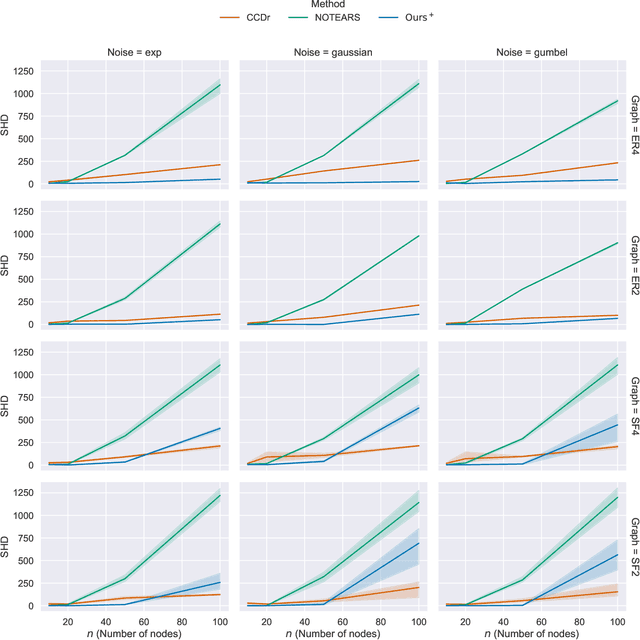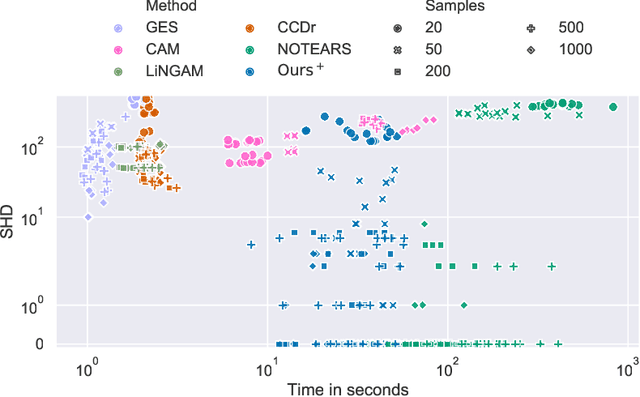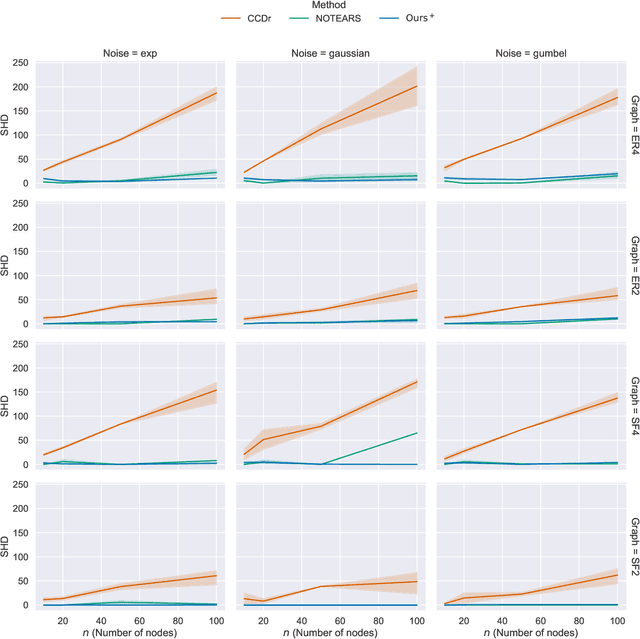Manon Romain
A Bregman Method for Structure Learning on Sparse Directed Acyclic Graphs
Nov 05, 2020



Abstract:We develop a Bregman proximal gradient method for structure learning on linear structural causal models. While the problem is non-convex, has high curvature and is in fact NP-hard, Bregman gradient methods allow us to neutralize at least part of the impact of curvature by measuring smoothness against a highly nonlinear kernel. This allows the method to make longer steps and significantly improves convergence. Each iteration requires solving a Bregman proximal step which is convex and efficiently solvable for our particular choice of kernel. We test our method on various synthetic and real data sets.
Adversarially Learned Anomaly Detection
Dec 06, 2018



Abstract:Anomaly detection is a significant and hence well-studied problem. However, developing effective anomaly detection methods for complex and high-dimensional data remains a challenge. As Generative Adversarial Networks (GANs) are able to model the complex high-dimensional distributions of real-world data, they offer a promising approach to address this challenge. In this work, we propose an anomaly detection method, Adversarially Learned Anomaly Detection (ALAD) based on bi-directional GANs, that derives adversarially learned features for the anomaly detection task. ALAD then uses reconstruction errors based on these adversarially learned features to determine if a data sample is anomalous. ALAD builds on recent advances to ensure data-space and latent-space cycle-consistencies and stabilize GAN training, which results in significantly improved anomaly detection performance. ALAD achieves state-of-the-art performance on a range of image and tabular datasets while being several hundred-fold faster at test time than the only published GAN-based method.
 Add to Chrome
Add to Chrome Add to Firefox
Add to Firefox Add to Edge
Add to Edge